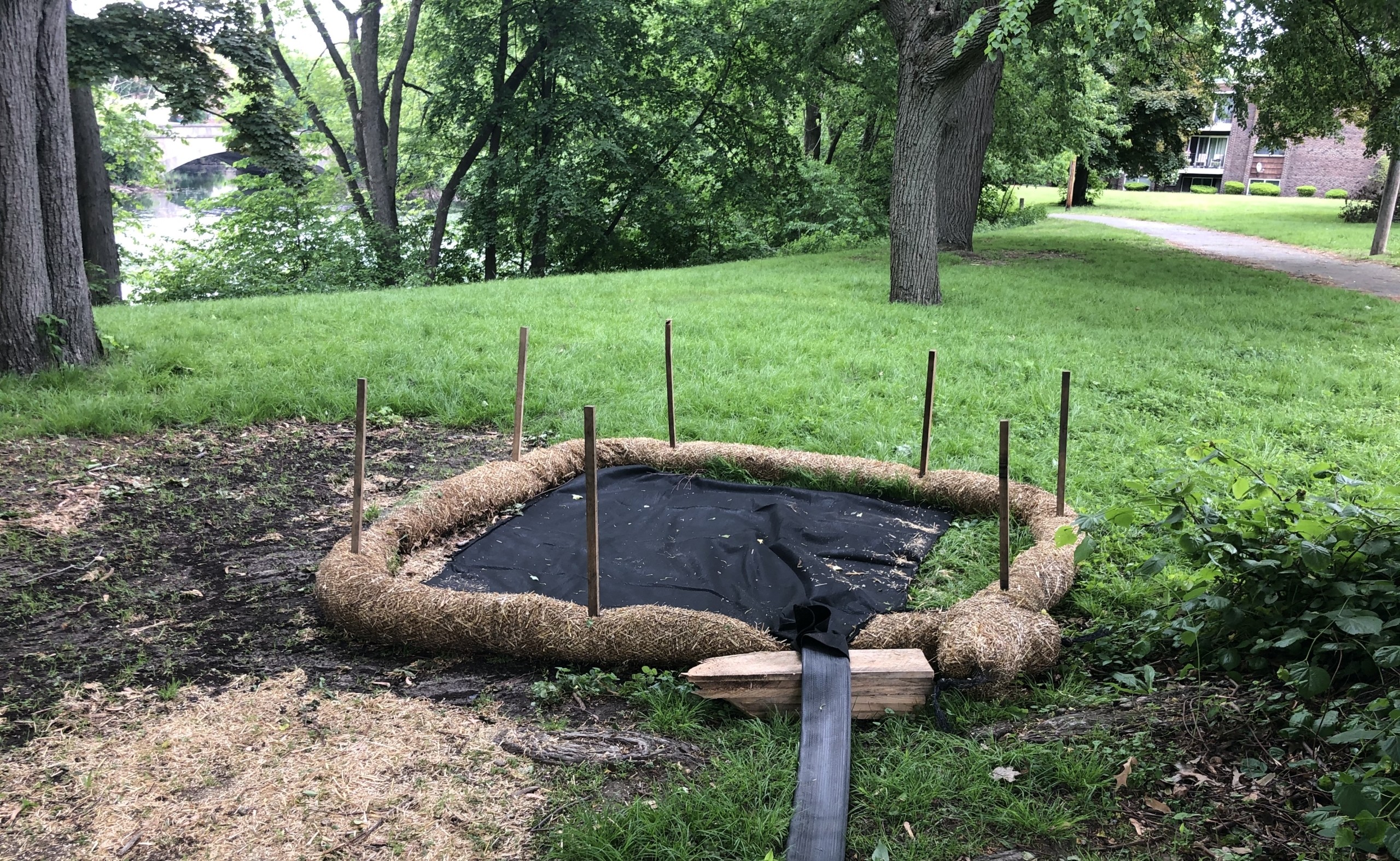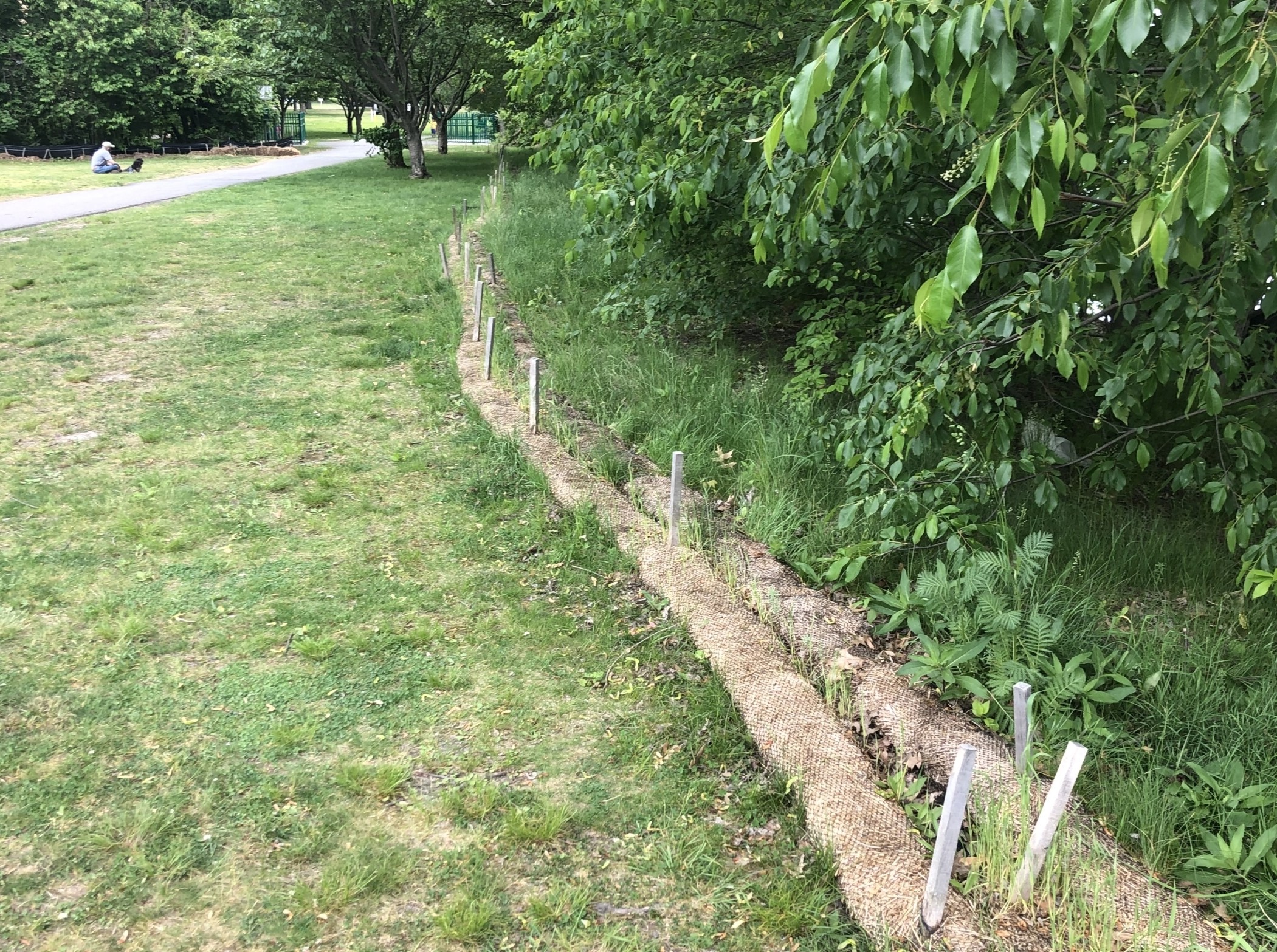Reminder: 2022 NPDES CGP effective February 17

The Tighe & Bond team sets up a stormwater dewatering discharge impoundment with a filter fabric bag.
The Environmental Protection Agency (EPA) issued the Final 2022 National Pollutant Elimination Systems (NPDES) Construction General Permit (CGP) for stormwater discharges from construction activity. The 2022 CGP will become effective on February 17, 2022, replacing the 2017 CGP, which expires on February 16, 2022.
Coverage applies for construction projects which disturb one or more acres of land in Massachusetts, New Hampshire, New Mexico, and the District of Columbia.
Contractors and Owners (aka Operators) will need to follow the Notice of Intent (NOI) compliance deadlines1 below:
| Type of Operator | NOI Submittal Deadline | Permit Authorization Date |
|---|---|---|
| Operator of a new site (i.e. a site where construction activities commence on February 17, 2022.) | At least 14 calendar days before commencing construction activities. | 14 calendar days after EPA notifies you that it has received a complete NOI, unless EPA notifies you that your authorization is delayed or denied. |
| Operator of an existing site (i.e. a site with 2017 CGP coverage where construction activities commenced prior to February 17, 2022.) | No later than May 18, 2022. | 14 calendar days after EPA notifies you that it has received a complete NOI, unless EPA notifies you that your authorization is delayed or denied. Provided you submit your NOI no later than May 18, 2022, your authorization under the 2017 CGP is automatically continued until you have been granted coverage under this permit or an alternative NPDES permit, or coverage is otherwise terminated. |
Additionally, Operators will need to revise their Stormwater Water Pollution Prevention Plan (SWPPP) to comply with the new requirements. Among others, there are several notable changes:
-
Turbidity Benchmark Monitoring for Dewatering Discharges
Collect and report turbidity samples for dewatering2 discharges to sensitive waters (if applicable). The following table from EPA.gov summarizes the new provision2. Turbidity benchmarks are not effluent limitations nor would an exceedance be a permit violation. However, it is a quantitative action to assess if the Best Management Practices (BMPs) for site’s dewatering controls are effective in protecting water quality.
Applicability Sampling Requirement Turbidity Benchmark Corrective Action Reporting Sites discharging dewatering water to a sediment-impaired water or to a water designated as Tier 2, Tier 2.5, or Tier 3. Collect at least one turbidity sample per day, from each discharge point, on any day there is a dewatering charge.
Use turbidity sampling procedures specified in CGP Part 3.3.1.Compare the weekly average turbidity monitoring results to the 50 NTU benchmark (or alternate benchmark if approved by the EPA). If the weekly average exceeds the benchmark, take follow-up corrective action in accordance with CGP Part 5.2.2. Report all weekly average turbidity monitoring results on a quarterly basis via NeT-CGP no later than 30 days following the end of each monitoring quarter. Additional compliance information for this requirement can be found in the EPA’s Inspection and Monitoring Guide for Construction Dewatering
-
Training for Persons Conducting Inspections
On or after February 17, 2023, a qualified professional must conduct an inspection to verify compliance with the permit. A qualified professional is defined as either: (1) completed the EPA construction inspection course and passed the exam, or (2) holds a current construction inspection certification or license from a program that covers the same core material as EPA’s inspection course. A link to EPA’s CGP Inspector Training Programs can be found here.
-
Inspection Frequency
The 2022 CGP clarifies when inspections are needed during multiday storms which produce 0.25 inches or more of rain. Snowmelt inspections were also clarified to include discharges that are caused by snowmelt from a storm that produces 3.25 inches or more of snow within a 24-hour period.
-
Permit Termination Documentation
Site photographs need to be submitted with the Notice of Termination (NOT) to document stabilization requirements have been met with either ground or aerial photography.

The project team captures an image of double-row straw wattle perimeter sediment controls
Our experts are here to help you navigate through these changes. Contact one of our team members below to have your questions answered.
- Emily Scerbo, PE, Senior Project Manager, Stormwater Practice Leader
Working with New England communities for 20 years to meet all aspects of EPA’s Phase II stormwater management requirements including stormwater utility development, watershed-based planning, asset management, and drainage system capital planning. - Jennifer Gilbert, PE, Project Manager, Stormwater Technical Specialist
Provides stormwater design and permitting services for over 10 years including preparing SWPPPs and conducting CGP inspections.
Additionally, the EPA is offering a webinar on February 24, 2022 at 1:00 PM (EST).
1EPA defines dewatering in Appendix A as “the act of draining accumulated stormwater and/or ground water from building foundations, vaults, and trenches, or other similar points of accumulation.” National Pollutant Discharge Elimination System (NPDES) Construction General Permit (CGP) for Stormwater Discharges from Construction Activities” [2022 CGP], https://www.epa.gov/npdes/2022-construction-general-permit-cgp
Tags: dewatering, engineering, EPA, NPDES, NPDES CGP, permitting, Stormwater, SWPPP


